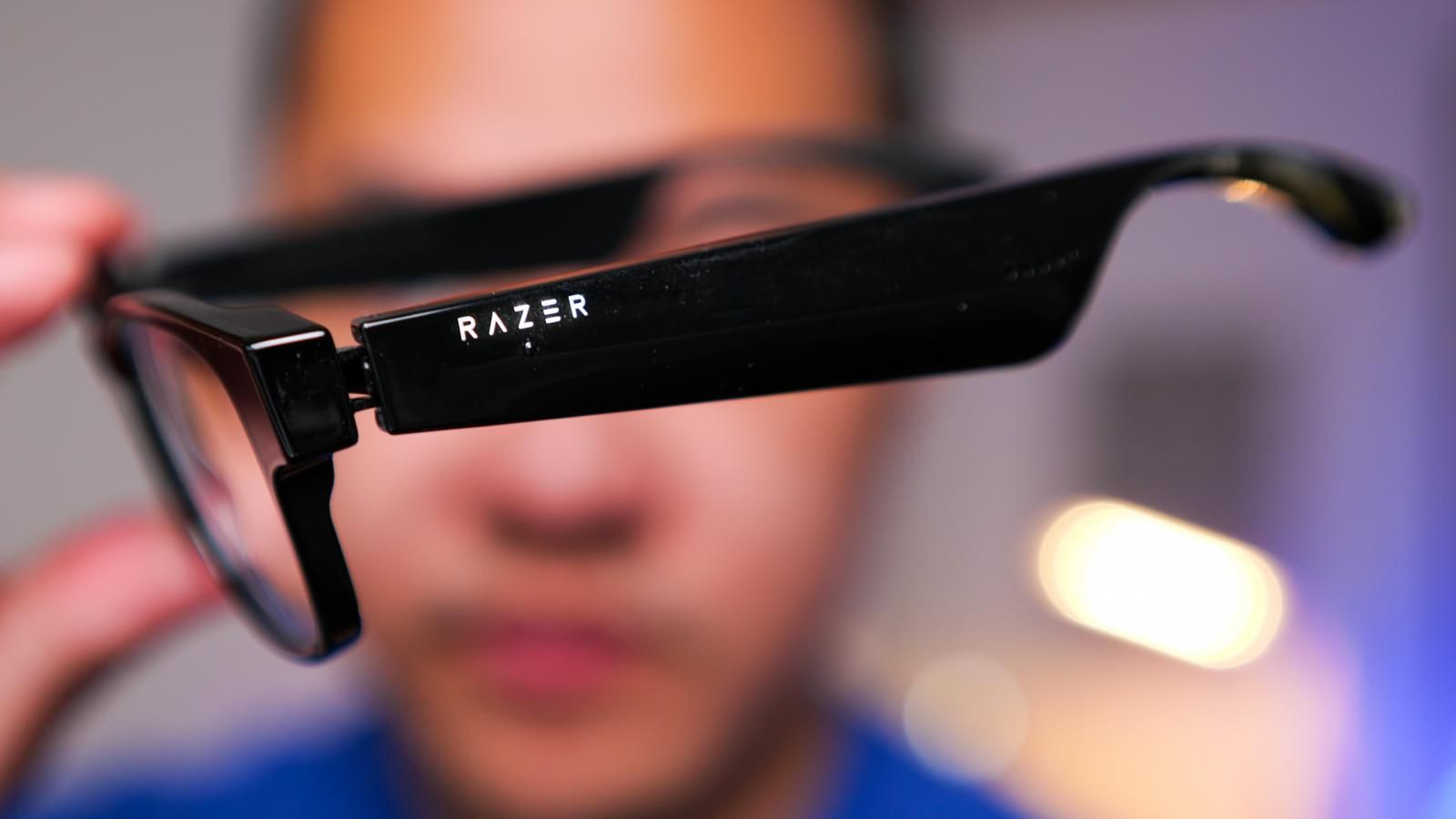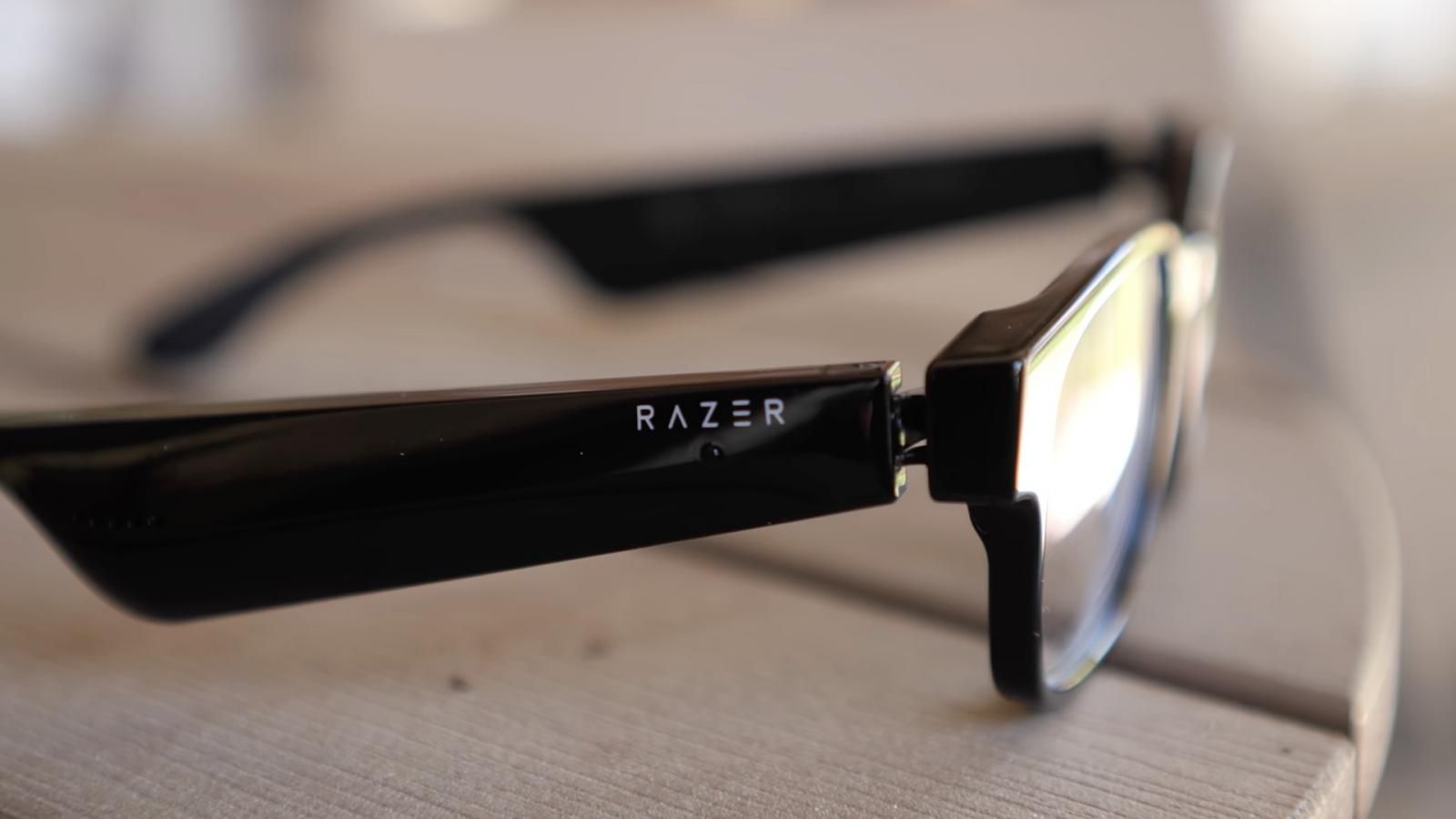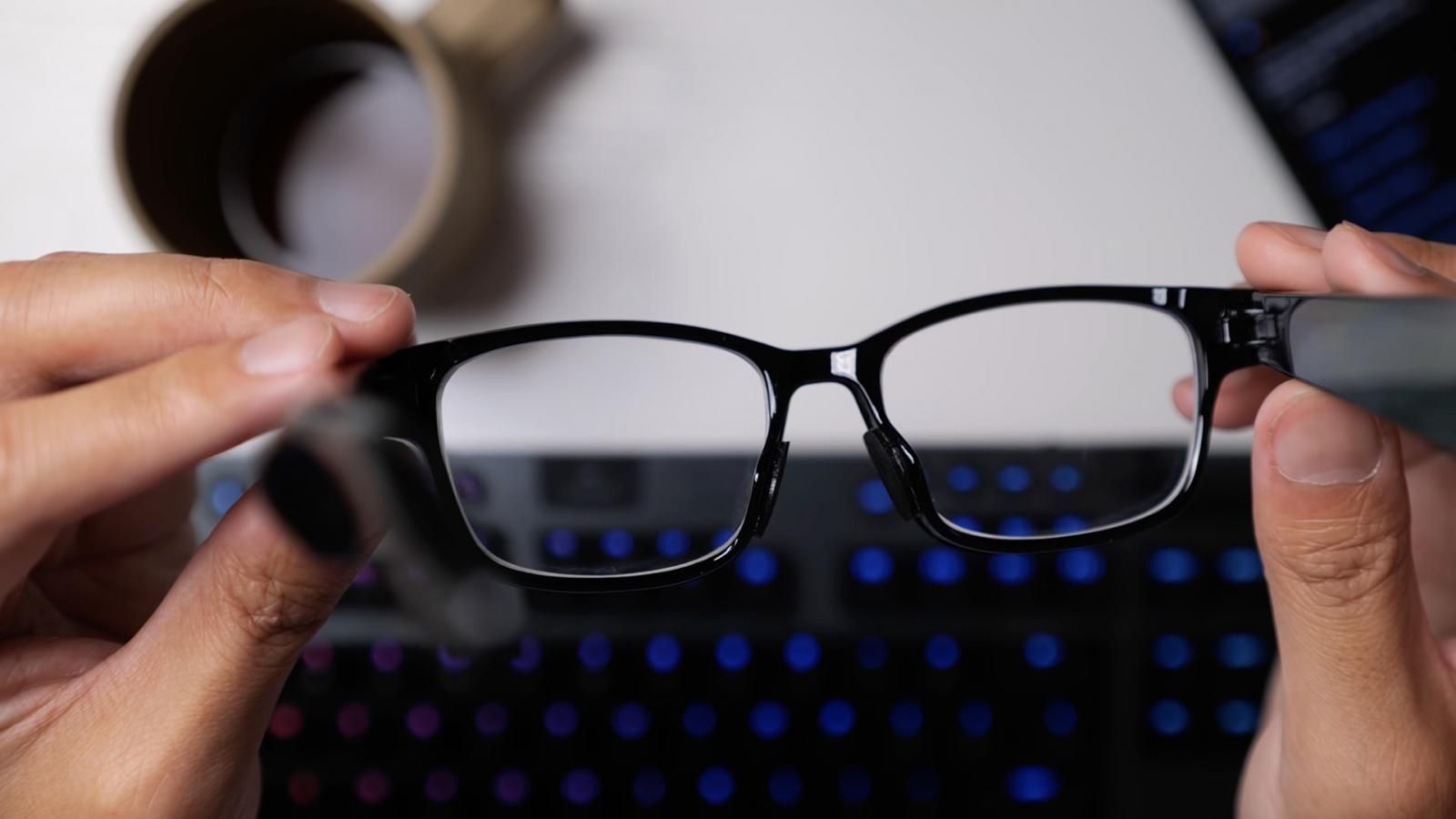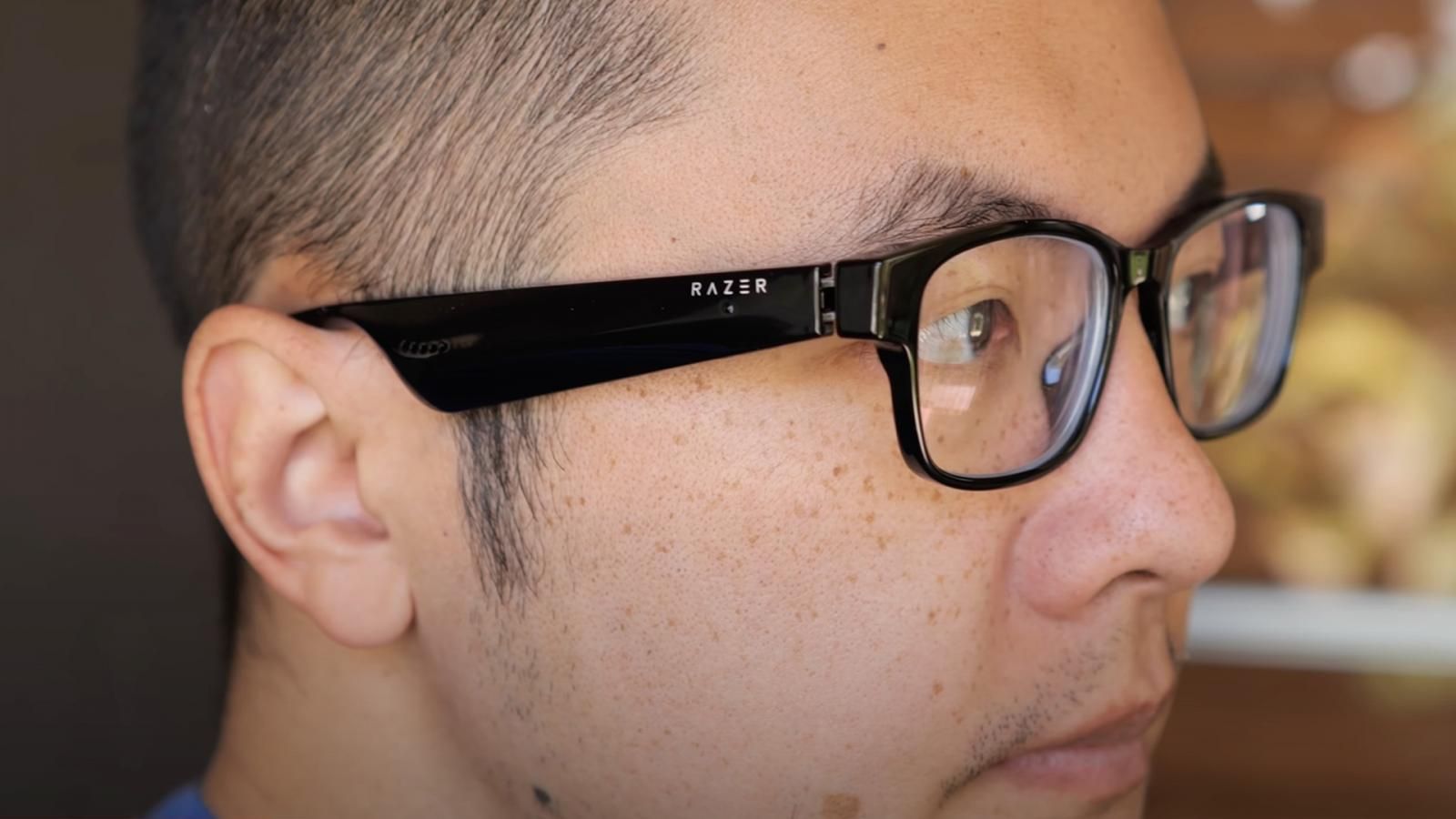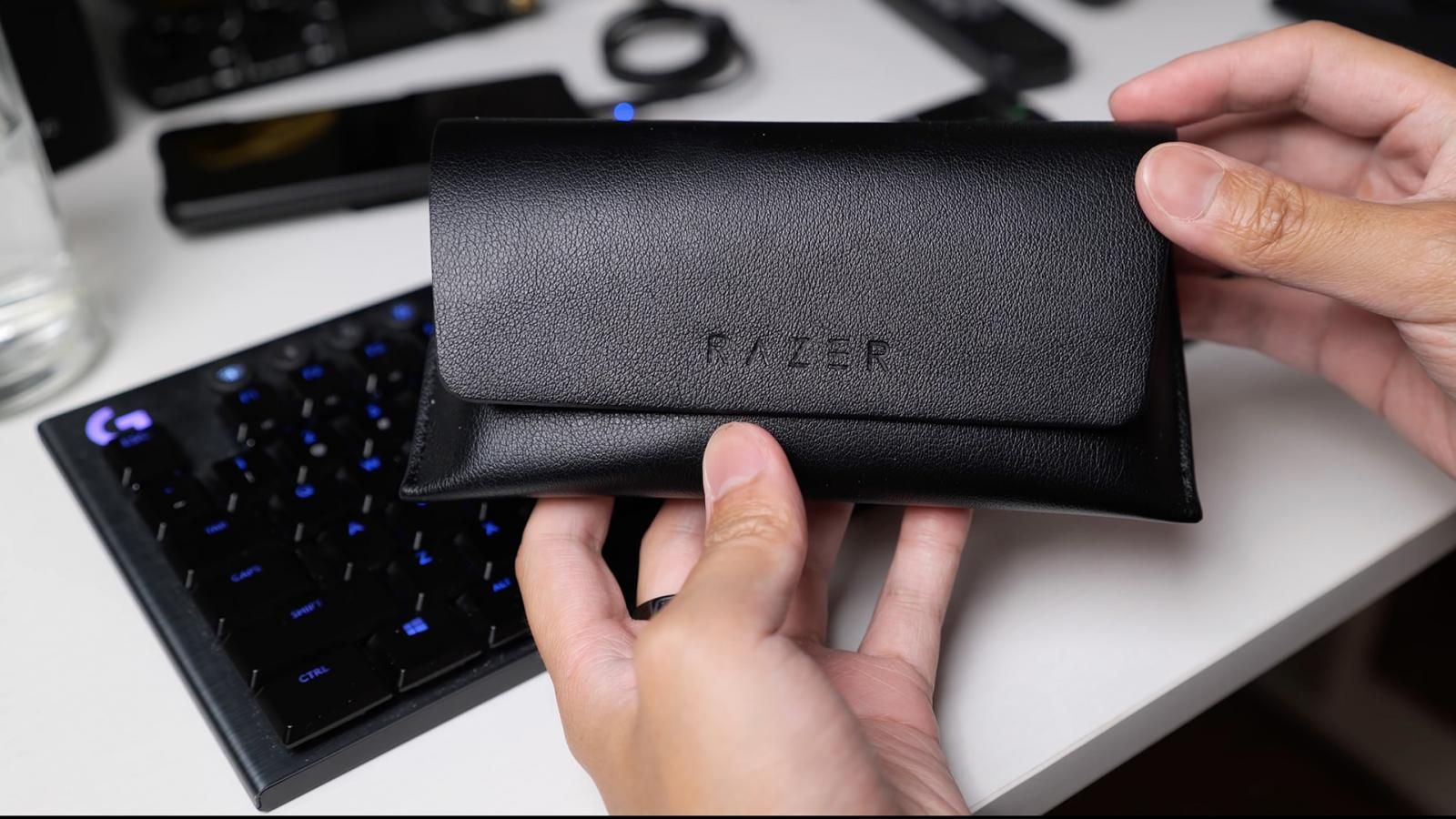Anton D. Nagy contributed to this Razer Anzu review.
It seems I’ve become the resident smart glasses reviewer here on Pocketnow, but I’m fine with that — because the category just keeps growing. The latest is from a company that might be uniquely equipped to provide their own spin on this kind of tech lifestyle product. So let’s put it on! These glasses on my face are from Razer and are the Anzu Smart Audio Glasses. This is our Razer Anzu review.
Keep them on, leave them on
While the most recognizable of the smart glasses category might usually be sunglasses, Razer decided to target the everyday WFH user who might do some gaming on the side. The Razer Anzu, in the two different shapes that both come in a couple of sizes, can have its lenses replaced with shaded glass but originally come with blue light blockers for more comfortable screen time. Of course, in my case, I had my pair of rectangular Anzu glasses sent into a service called Lensabl to get prescription lenses put in, complete with similar coatings that reduce glare and add blue light filtering. It took a while for my glasses to get done, but I’m happy that I got it done because these have become my go-to everyday glasses.
That’s because Razer has made the right choices in making this an accessible and easy to wear pair of frames. Compared to other smart glasses that have thick frames to match the thick temples, the Anzu keeps its frames a little thinner, making them blend in much better with general looks. A straight-on look at me wouldn’t give away the tech hiding in the arms, until I look more to the side, of course. Razer kept things minimal and thus their glasses blend in just enough.
There are a few other choices Razer made to make these glasses easy to keep on — the weight of the glasses is less than basically every other pair I’ve used and on the very ends of the arms there are rubber pieces that give the glasses grip to stay on. I did add in a couple of pads on the nose piece for further security, but even without these, the glasses don’t slip down as easily as others.
And the last reason why these glasses are easy to just wear continuously is that we found the battery life to be actually kind of impressive during our Razer Anzu review. 5 hours is what Razer claims in these, which sounds decent as far as wireless audio is concerned, but in terms of glasses, that’s actually pretty good. The battery does split duty between the two arms, as they work a lot like truly wireless earbuds, and that means that they have to be charged separately. It might already be weird for you to charge your glasses every night, but plugging them in before bed is easy enough to get used to — it’s just that the Y cable is a new little layer on top of that.
Easy, but too simple?
So as far as making sure the tech doesn’t lessen the comfort level, Razer has put many of the right considerations in place. The same goes for the control experience, which is done via touch-sensitive areas on the temples. A small bump can be felt and that’s where deliberate presses and holds are performed — you can play/pause, skip tracks, and activate your voice assistant. That’s about as much control and extra features as you get in typical truly wireless earbuds, and that’s okay — because it keeps things from getting too complicated.
But there’s a point where simple turns into ‘somewhat limited’ — you can see this already happening in the Anzu app, where you can customize the buttons and then you get a few options for sound EQ — all of which really don’t change the sound much at all. That’s it.
And after all of the praise that you heard me give Razer for their design choices, I do have to admit that the design might not entice many of you who want their unique glasses to look unique too. It’s all black everything no matter what version of the glasses you get, and even then it’s all glossy plastic. That said, I have no doubts about the build quality of the Razer Anzu; in fact, these glasses have an IPX4 rating so they even work just fine under sweaty conditions in the gym. But like other smart glasses, if you don’t like the look, it doesn’t matter what they can do because they won’t make it onto your face in the first place.
A smartphone speaker on your face
This could be a shame because audio glasses are honestly pretty fun and convenient. It’s important to remember that the sound quality will never be as good as something you put over or in your ears — but then again, it’s not trying to be. The drivers blare out of the speakers which are pointed downward to your ears, making personal audio find a middle ground between the loudspeaker in your phone and the earbud digging into your ear. The sound is loud enough and decent enough to work for specific genres of content — I’ve found them work best with spoken word content like podcasts and audiobooks, so whenever I’m out and about and want to have some audio in the background, it’s always at the ready. To that end, video and voice calls were great during our Razer Anzu review period, because if someone calls, it’s just a matter of picking up and talking naturally — the audio coming to me is good for conversations and the microphones in the temples do a good job of capturing my voice for whoever is on the other line. And in all scenarios, you keep your environmental awareness because this is about as open as a pair of open headphones can get.
Indeed, the best way of looking at — or rather, listening to — the Razer Anzu is to compare it to your smartphone speaker. You won’t get booming bass because the drivers aren’t in your ears, but it will be loud enough to enjoy the usual content you might have coming out of your speakers anyway. That’s why the focus on gaming makes sense, because if you’re like me and play Wild Rift or other mobile games often without headphones, now that audio doesn’t have to bother anyone else and it’s just for me. Think of all the content you might consume in this same method, and the Razer Anzu just makes it more personal and easier to access because the glasses are already on your head, ready to play. If the battery is charged, of course.
Admittedly, the smartphone speaker analogy has its drawbacks too — Razer isn’t anywhere near the Bose offerings in creating the bubble of sound that makes the Bose Frames a compelling example of audio glasses. And thus, the Razer Anzu has a sound leakage problem that can make it obvious to anyone even somewhat near you that you’re listening to something. You saw me using the glasses in the gym earlier on, but in that environment, the already loud sound environment drowns out the leakage just enough that no one has noticed I’m listening to the Bill Burr podcast while lifting. But it is still something to consider if it matters to you that your sound intrudes on other people’s hearing space. It’s better than a smartphone but doesn’t eliminate it completely.
Carving the new category
As I, with slight sight impairment, have had to go through the thought process of picking a new pair of eyeglasses, I’ve come to the conclusion that the tech and the fashion might not usually mix together, but they should be considered alongside one another. The Razer Anzu costs $199 on its own, which already seems a bit steep for anyone that doesn’t even need blue light filtering and already has a pair of truly wireless earbuds. But then getting prescription lenses in them can cost another $100. Put together, that’s the price of a high-end, premium pair of fashion glasses. We could reach a point where putting audio tech in the temples of, say, RayBans doesn’t shoot the price up too much, but for now, the give and take of tech and materials is obvious. It’s something we see in gadgets often — you pick the tech, or you pick the looks.
To wrap up our Razer Anzu review, unless you think the Razer Anzu does fit your style, I can understand why many of you still wonder why the tech in this new category of wearable even exists. It’s fun, it’s convenient, and for the first time it’s pretty damn easy — but it’s still so niche that I might be the only person you know that uses them every day.

